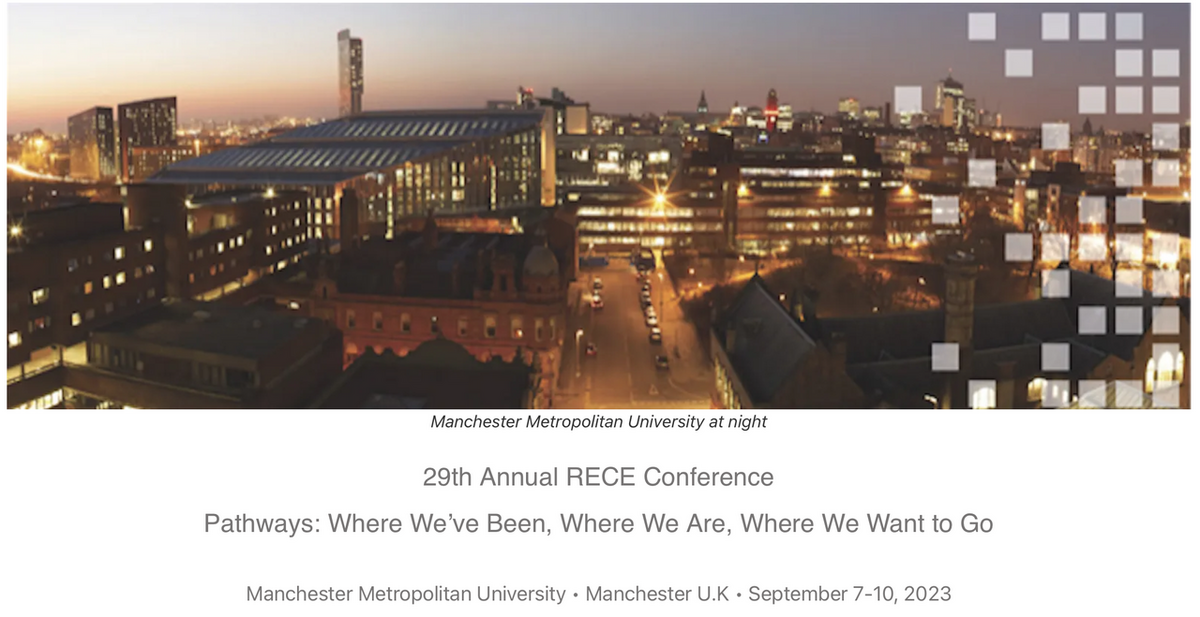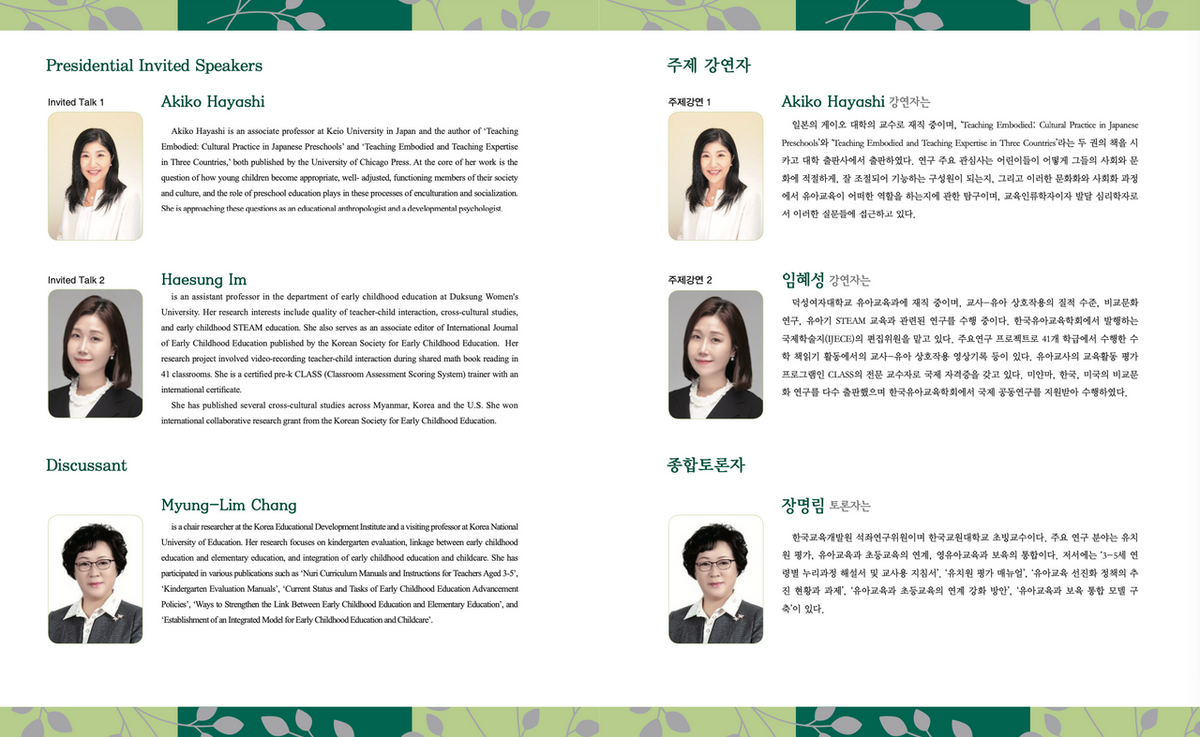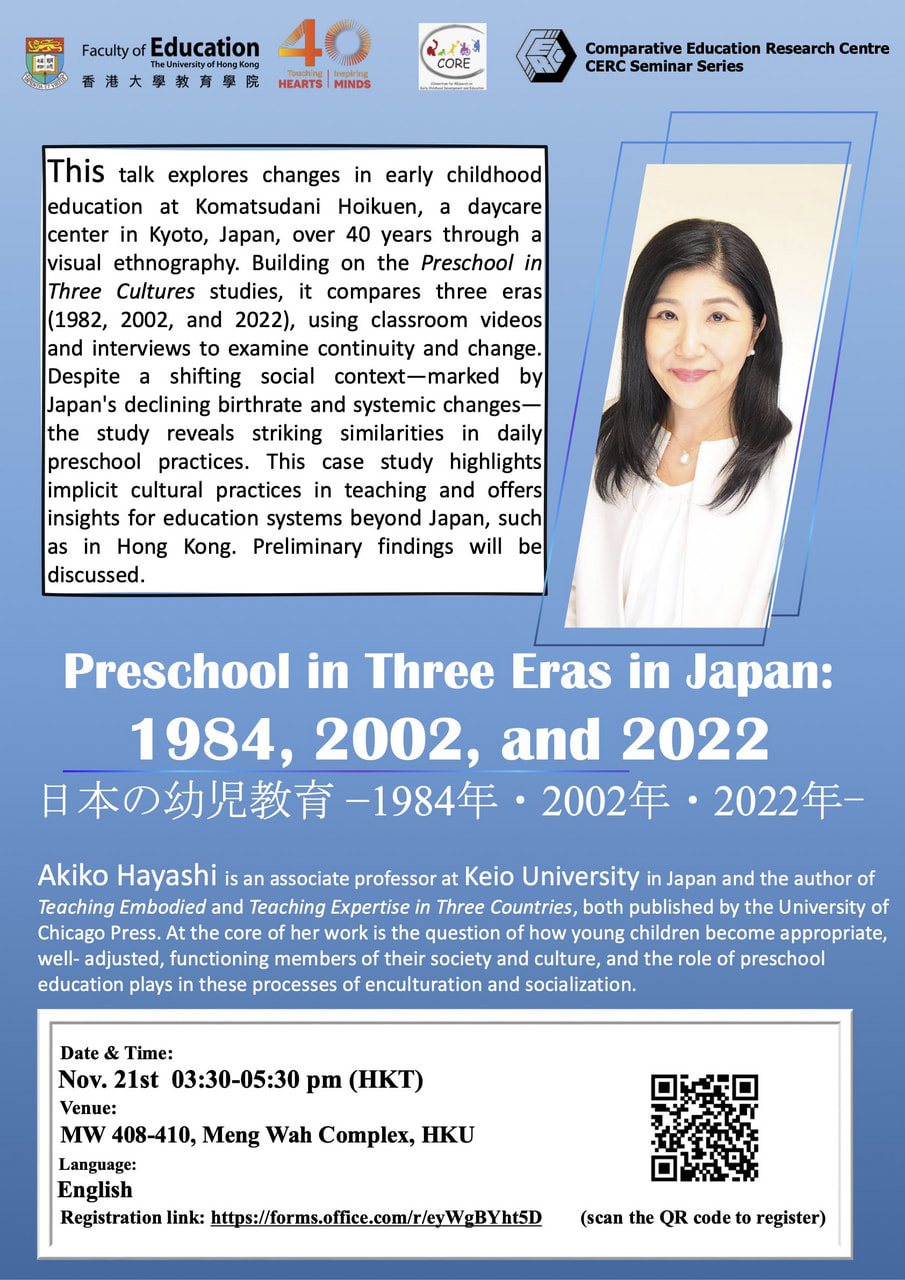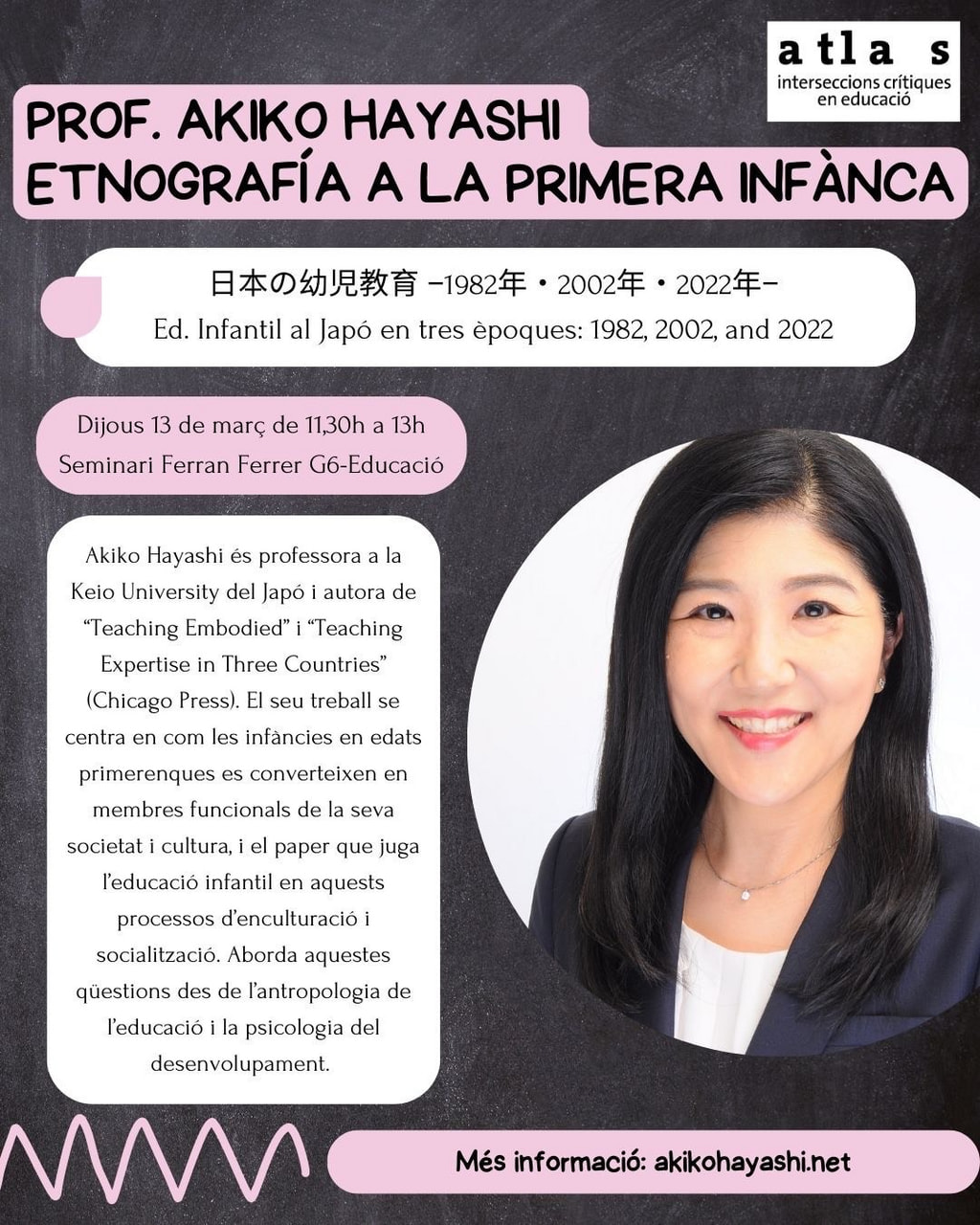国際比較教育研究/International Comparative Educational Studies
日本の幼児教育 −1982年・2002年・2022年− Preschool in Three Eras in Japan: 1982, 2002, and 2022
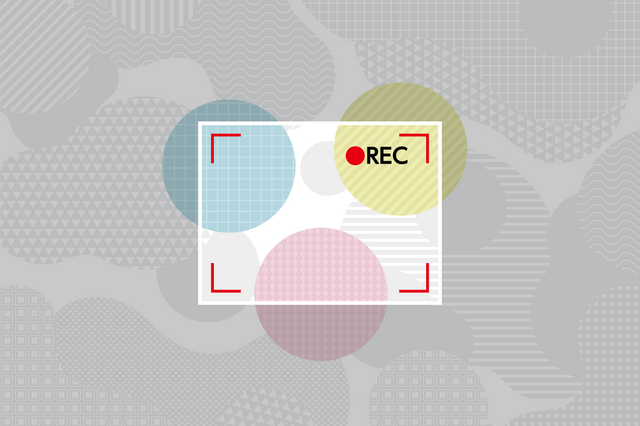
本研究は、京都府にある小松谷保育園に焦点をあてています。2002年から2022年における20年間で、何が変わり、何が継続されているのでしょうか。
小松谷保育園は『3つの文化における幼児教育』研究 (1989 & 2009) の舞台となった保育園です。『3つの文化における幼児教育2009』 (トービン, 朱, 唐澤, 2009) は、1982年から2002年に亘る20年間での3カ国における幼児教育制度の変化と継続に焦点をあてた研究です。本研究とは、多くの点で類似していますが、2つの点において決定的に違います。まず、本研究は、日本の幼児教育のみに焦点をあてていること、次に、2時代ではなく、3時代の比較研究であることです。
1982年と2002年、研究チームにより、小松谷保育園での「いつもの1日」のビデオが制作されています。本研究では、2022年のビデオを制作し、3時代のビデオを使い、幼児教育関係者にインタビューを実施します。また、本研究はビジュアルエスノグラフィでもあります。20年、40年にわたる縦断研究は稀で、長期的な観点からは、「2022年の日本の幼児教育の実態」の貴重な記録になると考えています。
つい先日、梅雨入り直前、小松谷保育園でのビデオ撮影を終えました。これから編集作業に入ります。
This is an ethnographic study of a daycare center, Komatsudani Hoikuen, in Kyoto, Japan. The research question is straightforward: “What has been changed or not changed over the last 20 years, from 2002 to 2022, at Komatsudani Hoikuen (daycare center)?”
Komatsudani Hoikuen is a daycare center featured in Preschool in Three Cultures Studies (1989 & 2009). Preschool in Three Cultures Revisited (Tobin, Hsueh, & Karasawa, 2009) focused on continuity and change in early childhood education systems in three countries over a period of twenty years from 1982 to 2002. This study, Preschool in Three Eras in Japan, is similar in many ways but has two important differences: One, this study focuses on only Japanese preschool. Two, this study is going to look at three eras, three era comparisons, rather than two time periods.
The research team in 1982 and 2002 made videos showing typical days in preschool classrooms. This study will add one more video, in 2022, then conduct interviews using these videos shot in three different eras. This study is also a visual ethnography of a preschool from a long-term perspective and as such, it will be a very important archive of Japanese preschools.
I have just finished videotaping Komatsudani Hoikuen and will edit the footage soon.
本研究は慶應義塾大学学事振興資金・福澤基金の助成を受けています。
This work is supported by Keio University Academic Development and Fukuzawa Funds.
